Learning about electricity is a crucial step toward understanding how modern technology powers our daily lives, and AC frequency is one of the primary concepts that needs to be understood. Alternating current (AC) serves as the backbone of electrical networks worldwide, powering homes, industries, and other devices. So, we asked ourselves, “What exactly is AC Frequency, and why is it so important?” This article delves into the key characteristics of alternating current, with a special focus on frequency and air concepts, how they are measured, and why they are so essential in the smooth operation of electrical systems. By the end of this blog, you will have gained a much deeper insight into the science behind that medium, which keeps the lights on and appliances running smoothly.
Basics of AC and DC
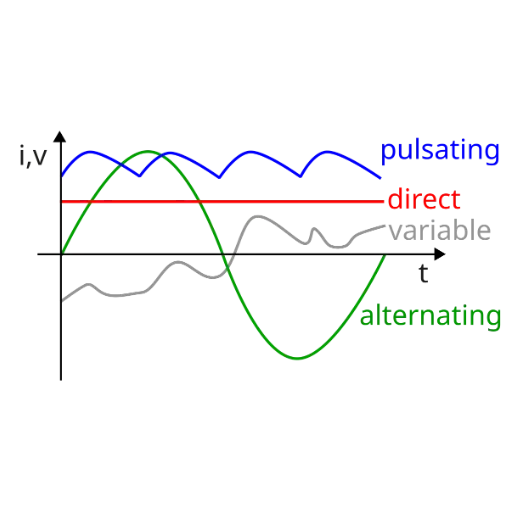
The two core categories of electrical power consist of alternating current (AC) and direct current (DC). The difference lies in the path along which electric charge flows: whereas AC reverses direction periodically, DC flows steadily in one direction. As an advantage, AC is predominant in power distribution for long-distance transmission and conversion to widely different voltages. One finds DC mostly in batteries and applications requiring constant, reliable power supplies, i.e., cell phones. Thus, confirming the essentiality of two currents—the former, transference of power systems, and the latter, facilitating the existence of modern electronics.
Definition of Alternating Current
For environment-friendly energy transmission over considerable distances without significant energy depletion, the current, therefore, has to change direction. In its simplest conception, the sine wave causes this voltage to vary sinusoidally with time so that the voltage swings from one maximum positive to a maximum negative. HZ denotes this parameter called frequency. The application of AC systems, through the design and manufacture of AC equipment, marked a turning point in the commercialization of electrical power on a large scale. This was because such voltages could be stepped up or down using transformers, depending on whether transmission or consumption was involved. Today, AC is considered to play a central role in current power grids.
Direct Current vs. Alternating Current
| Parameter | Direct Current (DC) | Alternating Current (AC) |
|---|---|---|
| Direction of Flow | Flows in one direction | Reverses direction periodically |
| Frequency | Zero | 50 Hz or 60 Hz |
| Voltage Transformation | Requires converters | Easily transformed with transformers |
| Energy Loss | Low over short distances | Higher without optimization techniques |
| Applications | Batteries, electronics, solar systems | Power grids, home appliances, industrial use |
| Generation Method | From chemical sources or DC generators | From AC generators and alternators |
| Transmission Range | Best for short distances | Efficient for long distances |
| Safety | Less risk of shock | Higher shock risk due to high voltage levels |
| Cost Efficiency | Generally more expensive to distribute | Economical for large-scale distribution |
| Historical Advantage | Early electrical systems favored DC | Dominant due to ease of transmission |
Importance of Frequency in Electrical Systems
The frequency parameter is of paramount importance, as it significantly influences the functionality and compatibility of devices and various infrastructures. For alternating current, frequency is essentially the number of cycles of current that occur in one second of time, with hertz (Hz) being the unit of measurement. To maintain the same design standards and interoperability of electrical equipment, either the 50 Hz or 60 Hz standard frequency is used globally, depending on the majority of the respective region.
Frequency measurements must be precise if the power grids are to operate stably. A frequency variation-induced inefficiency or disturbance may cause sensitive electronics or industrial machinery to malfunction. In relation to power generation and distribution, frequency would, for example, need to be controlled to ensure synchronizing generators, thereby preventing disruptions to the power supply.
Furthermore, frequency affects both energy efficiency and aspects of system design. Renewables require sophisticated frequency management, particularly in systems such as wind or solar, to ensure smooth integration into the conventional grid. Over the past years, the frequency management systems within modern grids have undergone a degree of smart control enabling them to monitor and regulate frequency in real time that optimizes their performance and reliability in both large-scale and localized electrical networks.
Understanding AC Frequency
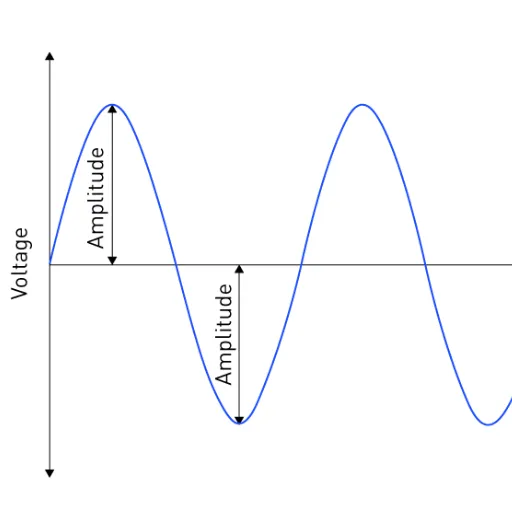
At present, the frequency of an AC power system refers to the repetition of one complete cycle every second. The standard frequency in the electricity grids of most countries worldwide is either 50 Hz or 60 Hz. Based on historical and logistical considerations, the choice of one frequency must have been weighed against the other; both currents, however, do the work equally. The AC frequency must be maintained because devices operating at it will either function inefficiently or become damaged if this frequency becomes unstable.
What is AC Frequency?
With respect to AC frequency, we are examining a critical aspect in the global operations of electrical systems. The consistency of the frequency prevents synchronous machines, such as generators and motors, from running inefficiently with disruptions. Electrical appliances and equipment are typically designed to operate efficiently at the standard frequency of 50 or 60 Hz in their region. Deviations from the standards may cause such appliances to overheat, perform inefficiently, or be damaged. A stable AC frequency is essential for synchronizing power grids, especially interconnected systems, as a lack of uniformity can cause imbalances and outages. With the advent of renewable resources being integrated into existing grid systems, AC frequency monitoring and control are becoming increasingly important, requiring more advanced technologies for value.
60 Hz and 50 Hz: The Standard Frequencies
| Parameter | 60 Hz | 50 Hz |
|---|---|---|
| Geographic Distribution | North America, some parts of Asia | Europe, Africa, most of Asia |
| Voltage Standards | 120V / 240V | 220V / 240V |
| Energy Loss | Lower transmission losses | Slightly higher transmission losses |
| Motor Performance | Higher speed | Lower speed |
| Frequency Applicability | Common in industrial equipment | Common in residential systems |
| Renewable Integration | Advanced techniques required | Advanced techniques required |
| Appliance Compatibility | Designed for 60 Hz systems | Designed for 50 Hz systems |
| Grid Synchronization | Stable in 60Hz regions | Stable in 50Hz regions |
| Historical Origin | Edison-based systems | European influence |
| Standard Adherence | IEEE Standards | IEC Standards |
How Frequency Affects AC Power
The frequency of AC power systems is crucial in determining the efficiency, functionality, and compatibility of electrical devices and infrastructures. Regarding frequency, motors, transformers, and other equipment in the electrical network are also designed and operated. For instance, concerning 60 Hz systems that are mostly common in the United States, the equipment is designed for higher speeds and a better power-to-weight ratio. On the other hand, 50 Hz, which is mostly applied in Europe and Asia, is characterized by increased durability due to a reduction in the speed that accelerates wear and tear of its mechanical components.
The efficiency and losses in transmission are other considerations influenced by the grid frequency. A higher frequency reduces the size of transformers for the same power rating, thereby maximizing resource utilization. Conversely, a lower frequency level can reduce hysteresis losses in magnetic materials. These trade-offs necessitate customized engineering considerations to maintain balanced levels for transmission performance and energy losses across regions.
Frequency synchronization is a key factor in integrating renewable energies to ensure consistent power delivery both locally and internationally. Devices such as inverter technologies and frequency stabilizers are integral to bridging the significant gap between fluctuating renewable inputs and the grid’s requirements for a standard, agreed-upon frequency. These intricate relationships underscore the importance of stability and adherence to regional standards for power distribution and system reliability.
Measuring AC Frequency
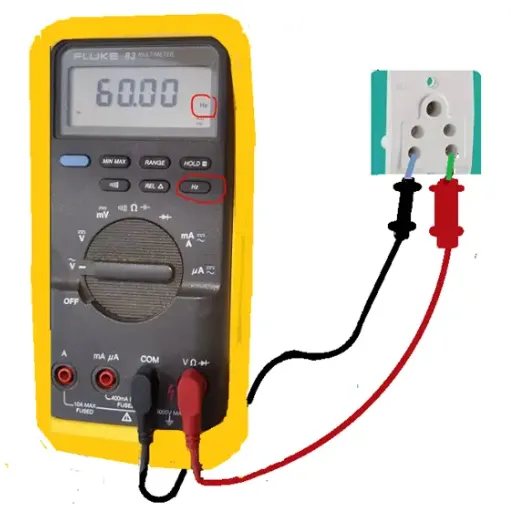
To measure an AC frequency, the instrument employed could either be a frequency meter or a multimeter capable of frequency measurement. These are capable of granting accurate readings of the detected cycles of an AC waveform completed in one second as hertz (Hz). When possible, attach the meter to the circuit under test and ensure the device is calibrated for that particular frequency range. Checking with a good piece of equipment at intervals will help to ensure that frequency measurements remain accurate and consistent.
Understanding Hertz and Its Significance
Hertz, named after the German physicist Heinrich Hertz, is the standard unit of frequency and is the number of cycles per second with which a periodic wave repeats itself. Frequencies, broadly speaking, find their place in the gamut of electronics, telecommunications, physics, and engineering. For example, power systems worldwide typically operate at a standard frequency of 50 Hz or 60 Hz, ensuring their systems are well-organized and reliable. Wireless communication has also traditionally used hertz to indicate the frequency of signal bands in communication, including cellular, radio, and Wi-Fi.
Once understood, the hugeness of this unit in modern evolution must be applied. Through the use of devices such as oscilloscopes and frequency counters, measurements are made with great precision to guarantee that components meet performance specifications in research, development, and manufacture. Even acoustic engineers require frequencies in hertz to modify sound quality and tune instruments, balancing the application of this equally across the lower and higher ranges. The universalizing nature of Hertz gives it, therefore, an importance among scientific and practical applications.
Amplitude and Root Mean Square in AC
In the realm of alternating current (AC) systems, the amplitude and root mean square (RMS) form a basis that helps to characterize an electrical signal. The amplitude is the peak voltage or current of the waveform, which means the maximum deviation from its average value in a cycle. On the contrary, the RMS gives a value of AC or voltage that is comparable to a level that you would assign for a direct current (DC) system that can deliver the same power. For sinusoidal AC waveforms, the RMS value is given as the peak amplitude divided by the square root of two, or approximately 1.414. The latter provides accurate power calculations through circuits that lend much importance to designing both electrical equipment and systems. This is further aided by sophisticated tools and software that can be applied to measure and display these concepts with great accuracy, thereby guaranteeing and enhancing the outcome and efficiency of electrical applications.
Tools for Measuring AC Frequency
An accurate measurement of AC frequency is crucial for preserving the system’s performance and reliability. Several modern tools have emerged to maintain frequency measurement with utmost precision. A digital multimeter with frequency measurement is used most commonly because of its functionality and easy use, while the oscilloscope is of prime importance in waveform visualization in real-time, where the measurement of frequency is just one of the introductory analyses, with the major applications lying on phase analysis of the signals and analysis of more advanced behaviors of the signals that could not be measured in any other way. A frequency counter is a highly specialized instrument, giving precise readings on frequency within a particular range, and is indispensable in applications made both in a laboratory and in the field. Recent implementations of these instruments introduce portability and wireless capabilities coupled with easy integration into data storage systems, thus providing efficient monitoring and analytical tools needed in front-end applications such as power systems, communication, and electronic device testing.
Applications of AC Frequency
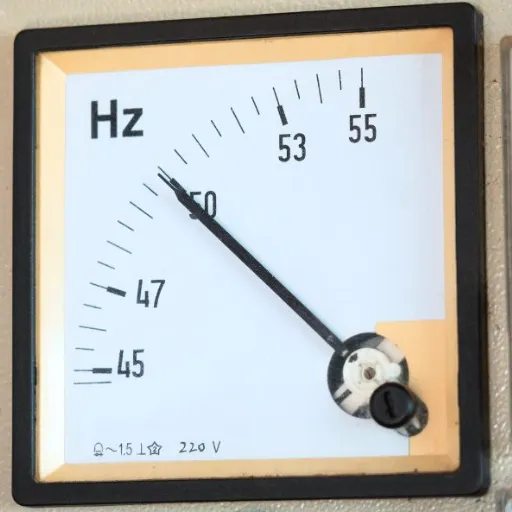
Without the frequency of AC, the smooth running of electrical and electronic systems can not be assured. It is, however, significant for power distribution and maintaining the frequency to assure correct and safe operation of devices and appliances. It is also important in communication systems as any variation in frequency will affect the signal’s quality and reliability. Industrial applications utilize frequency control to ensure the smooth operation and efficient performance of motors and generators. Furthermore, AC frequency controls the synchronization of equipment in large power systems, such as power grids, to maintain consistent and uninterrupted energy delivery.
Power Supplies and AC Power Supply
Power supplies are used to convert electrical energy into a form that a wide range of devices and systems can utilize. They ensure that the given piece of electronic equipment is always dependent on a source of energy, whether for industrial use or for day-to-day consumer electronics. An AC power supply is designed to provide alternating current at a specific voltage and frequency, and once offered, it is necessary to power devices that require AC input, such as household appliances and industrial machinery.
Modern AC supplies may also possess several advanced features and functions for regulating voltage, controlling frequency, and protecting the equipment from power surges, ensuring optimal power handling and crucial protection for sensitive equipment. Industrial AC power supplies, among others, are designed to meet the needs of highly demanding high-power systems, whereas much smaller versions handle the less intense power requirements of their household or portable device counterparts. The functionality enhancement of AC power supplies continues on both the commercial and residential sides, thanks to engineering innovations aimed at improving energy efficiency and compactness.
Impact of Frequency on Electrical Devices
The operating frequency of an electric current affects the performance and efficiency of several apparatuses discussed above. For example, many electrical appliances have been designed to operate under certain frequency conditions: either 50 or 60 Hz in different parts of the world. An improper frequency will practically lead to malfunctions, either reduced efficiency or possibly damage. High-frequency signals of the type used in communications or in specialized equipment speed up data transmission but must increase the losses from energy conversion due to heat. By contrast, low frequencies incur more line losses during longer-distance transmissions, but are apparently not suitable for high-speed applications. Technology has rendered such frequency advertisements useful by enabling today’s modern apparatuses to coordinate incompatible frequencies and function optimally through the usage of frequency converters or inverters. Understanding frequency effects is not only a way to protect apparatus performance but also to ensure consistency in the interconnected world of today.
Comparing 50 Hz and 60 Hz Usage Globally
The disjointedness of the worldwide distribution of 50 Hz and 60 Hz frequency standards stems primarily from historical factors and the influence of regionalism. About two-thirds of the world, including most of Europe, Asia, Africa, and Australia, is being made operable under 50 Hz. The standard originates from the development of early electrical systems, becoming widespread due to regional engineering practices and the influence of colonial regimes. The 60 Hz, on the other hand, has resonance in areas such as the U.S., Canada, and much of South America since the development of North America’s power grids.
From an engineering perspective, each one brings a plus. A 50 Hz system is known to incur slightly less energy loss over long distances due to its low frequency, and therefore can become an advantage for long-distance power transmission systems. A 60 Hz system, however, can produce slightly smaller and hence more efficient transformers and motors due to the reduced core losses at the higher frequency.
Historical Context and Future Trends
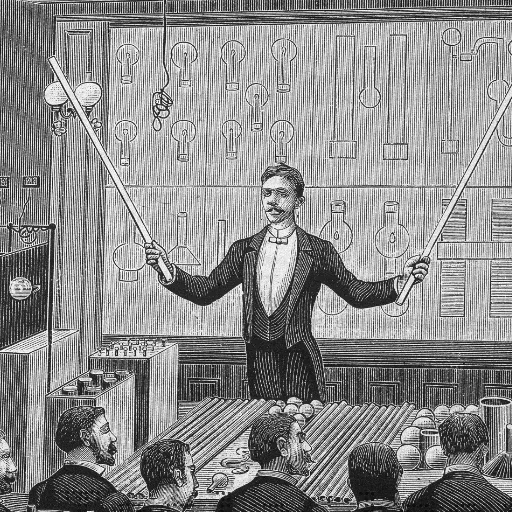
The divergence between 50 Hz and 60 Hz systems originates from the early development of electrical grids. European states largely opted for 50 Hz for the purpose of standardizing power systems, while 60 Hz was chosen in the United States and later in North America, owing to the preferences of early pioneers such as Westinghouse and Tesla. The choices were, to a great extent, shaped by the limitations of technology, manufacturing standards, and regional preferences at the time.
The future, on the other hand, will see trends emerging that join efforts for the integration of renewable energy sources, promote energy efficiency, and transform power grids with technologies like smart grids. The two frequencies will most likely persist due to the prohibitive costs and high complexity involved in standardizing the entire world in terms of frequency; hence, we would expect to see developments in power conversion and grid interoperability that would solve a plethora of issues arising from systems working in coexistence.
Tesla’s Contributions to AC Technology
Nikola Tesla was a pivotal figure in advancing alternating current technologies, thereby shaping the future of electricity distribution. The evolution began with an induction motor that was quite unusual, as it generated rotating magnetic fields to transfer electricity efficiently. With this noble attempt to develop the AC polyphase system, Tesla made a remarkable contribution to the design of electrical grids that are modern today, as they can transfer power over long distances with minimal loss.
Collaborating with George Westinghouse, Tesla illuminated the 1893 World’s Columbian Exposition in Chicago as a demonstration of the utility and efficacy of AC power, and great developments in AC power were later made in constructing the first big hydroelectric power plant at Niagara Falls. Tesla’s foresight into the scalability and sustainability of AC systems has continued to lay the groundwork for advancements in energy distribution.
Future of AC Frequency Standards
The future of AC frequency standards is likely to be transformed as technology becomes more viable, energy efficiency improves, and global connectivity becomes a reality. With the development of renewable energy like solar and wind, the need for flexible and adaptive frequency systems is becoming increasingly relevant. Modern grids must systematically accommodate fluctuating power inputs, leading to advancements in frequency regulation and synchronization technologies worldwide. Such technologies are also expected to aid in the standardization of frequency at a global level, thereby reducing losses during the exchange of energy, which is likely to occur more frequently on this scale. Other relevant emerging technologies include smart grids and real-time monitoring systems for maintaining consistent frequencies and optimizing energy consumption. In light of these evolutions, future AC frequency standards will most likely be highly dependable, dynamic, and adjustable to the requirements of a sustainable, interconnected energy landscape.
Emerging Technologies in AC Power Systems
The rise of IoT integration with AC power systems has significantly altered the landscape of energy monitoring and management. Applications of smart sensors and connected devices for real-time data collection include energy flow, equipment performance, and system demand, which adds to the impediments of over-efficiency and unforeseen periods of downtime. With IoT-backed predictive analytics, maintenance can be performed only when necessary, thereby eliminating unexpected failures and ensuring uninterrupted power delivery. Meanwhile, on the demand side, IoT may provide energy utilities with the tools to identify and manage demand, thereby increasing consumer engagement through demand tools such as smart meters, which enable active monitoring and control of their energy usage. These advances in technology are leading to the creation of more innovative and more sustainable energy networks.
Moreover, artificial intelligence (AI) and machine learning (ML) techniques are forecasted to become paramount in optimizing AC power systems. By examining massive datasets, these technologies can identify patterns and forecast load demands, enabling the dynamic modification of power distribution. AI-powered algorithms contribute to grid stability by instantly evaluating and properly responding to voltage or frequency fluctuations. They also enhance energy efficiency by channeling route planning for energy transmission and minimizing energy losses during distribution. Furthermore, AI and ML substantially contribute to the design of forward-thinking power systems that can evolve in tandem with tomorrow’s energy needs.
Reference Sources
-
High-frequency operation of a DC/AC/DC system for HVDC applications
- Summary: This paper explores the use of high-frequency AC in DC/AC/DC systems for High Voltage Direct Current (HVDC) applications. It highlights how increasing AC frequency can significantly reduce the volume of components and improve system efficiency by lowering switching losses.
-
Low Frequency AC transmission for offshore wind power: A review
- Summary: This review focuses on Low Frequency AC (LFAC) transmission systems for offshore wind power. It discusses the advantages of LFAC in reducing system complexity and improving the integration of offshore wind farms with onshore grids.
Frequently Asked Questions (FAQs)
Q: How do 50 Hz and 60 Hz AC frequencies differ?
A: The basic difference between 50 and 60 Hz AC frequencies is that one completes fewer cycles in a second than the other. Appliances in 60 Hz countries, primarily from North America, are designed to operate efficiently at this frequency; consequently, a considerable number of appliances in several other jurisdictions also work efficiently at 50 Hz. Frequencies essentially enabled electric motors to operate up to a certain level of capability, and transformers also had specific operational capabilities that varied with frequency. For example, under 60 Hz operating conditions, an AC motor may tend to run faster as compared to a 50 Hz version, thus influencing the output of the motorized devices. In some instances, conversions must be implemented to allow the use of one frequency instead of the other; these often involve converters that convert AC to DC or vice versa.
Q: What role does Hertz play in the operation of AC power supplies?
A: Hertz (Hz) is a fundamental parameter that measures the frequency of an AC in electric circuits, especially how many cycles occur within one second. The power is generated and distributed by an AC power supply at the actual frequency. Hence, electrical devices and systems for power distribution are designed with respect to the frequency. For example, the normal mains power in the U.S.A. runs at 60 Hz, which means the current reverses direction 60 times per second. Therefore, it becomes crucial for engineers designing systems to know the Hz, as this maximizes the current flow and ensures compatibility with appliances, which operate at the right frequency.
Q: Why do different countries use different AC frequencies?
A: Most of these choices in countries on the frequency of AC go back to how electrification took place towards the end of the 19th century. While some countries adopted 50 Hz, others, including the U.S., opted for 60 Hz due to the promotion of the latter frequency by electrical pioneers such as Thomas Edison and General Electric. These frequencies gained recognition in their respective parts of the world over time, resulting in the present situation where 50Hz is the standard in Europe and 60Hz is used in North America. The situation poses a problem that hinders international manufacturing and trade, as devices designed for one frequency may not work optimally on the other. Equipment must be adjusted, or consumers must use converters when crossing electrical standards.
Q: How does the frequency of AC electricity affect electric motors?
A: The frequency of AC electricity affects electric motors with respect to their speed and efficiency. An electric motor is designed with a specific frequency in mind, with variations in speed and torque characteristics resulting from deviations from the standard. To be more specific, a 60 Hz AC motor will generally run faster than one designed for 50 Hz. The very difference may prove to be crucial in applications that require exact timing and speed control. On the contrary, operating a motor at a frequency other than its design frequency risks heating it up and lowering its efficiency due to different currents flowing where they should not. This aspect of AC must be considered by electrical engineers when designing distribution systems and selecting motors for various applications to ensure reliable operation and longevity.
